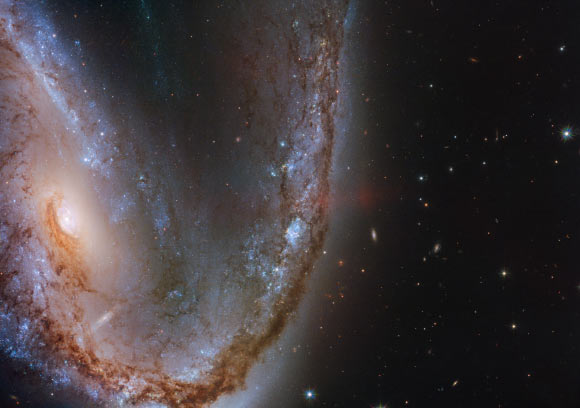The NASA/ESA Hubble Space Telescope has produced a spectacular image of part of the distorted spiral galaxy NGC 2442/NGC 2443.

This Hubble image shows the Meathook Galaxy, a distorted spiral galaxy located 60 million light-years away in the constellation of Volans. Image credit: NASA / ESA / Hubble / S. Smartt et al.
NGC 2442 and NGC 2443 are two parts of a single intermediate spiral galaxy, located approximately 60 million light-years away in the southern constellation of Volans.
Commonly known as the Meathook Galaxy, this peculiar system was discovered by the British astronomer John Herschel on December 23, 1834.
Also known as LEDA 21373, ESO 59-8 and IRAS 07365-6924, it has a diameter of 75,000 light-years.
It features two dusty spiral arms extending from a pronounced central bar that give it a hook-like appearance, hence its nickname.
Its extremely asymmetrical and irregular shape is most likely the result of a close encounter with a smaller galaxy.
In March 2015, a Type Ia supernova called SN 2015F was observed in the Meathook Galaxy.
It shone brightly for quite some time and was easily visible from Earth through even a small telescope.
“The supernova explosion SN 2015F was created by a white dwarf star,” Hubble astronomer said.
“The white dwarf was part of a binary star system and siphoned mass from its companion, eventually becoming too greedy and taking on more than it could handle.”
“This unbalanced the star and triggered runaway nuclear fusion that eventually led to an intensely violent supernova explosion.”







